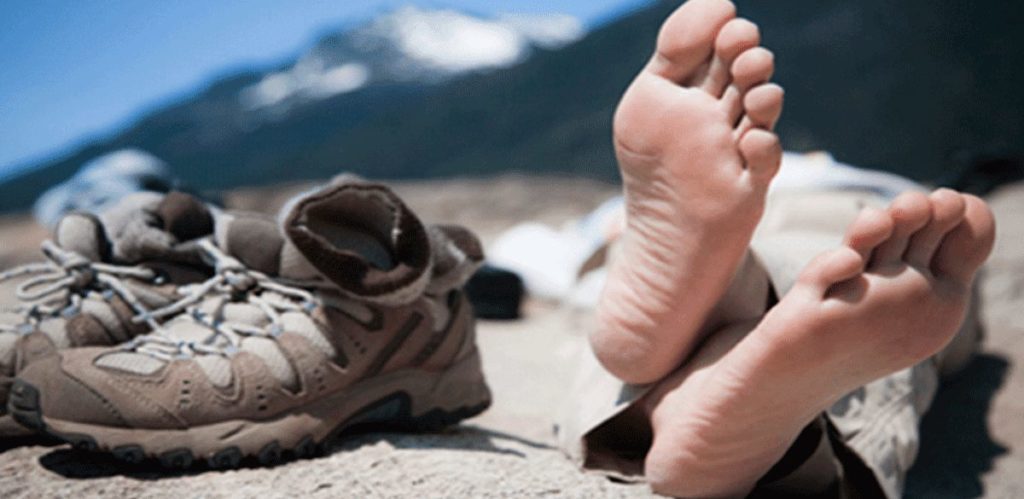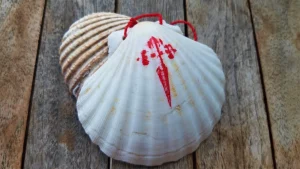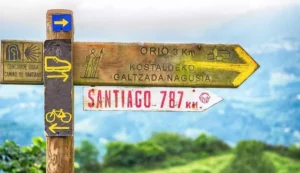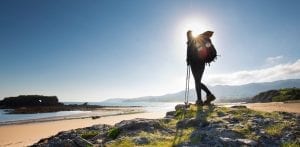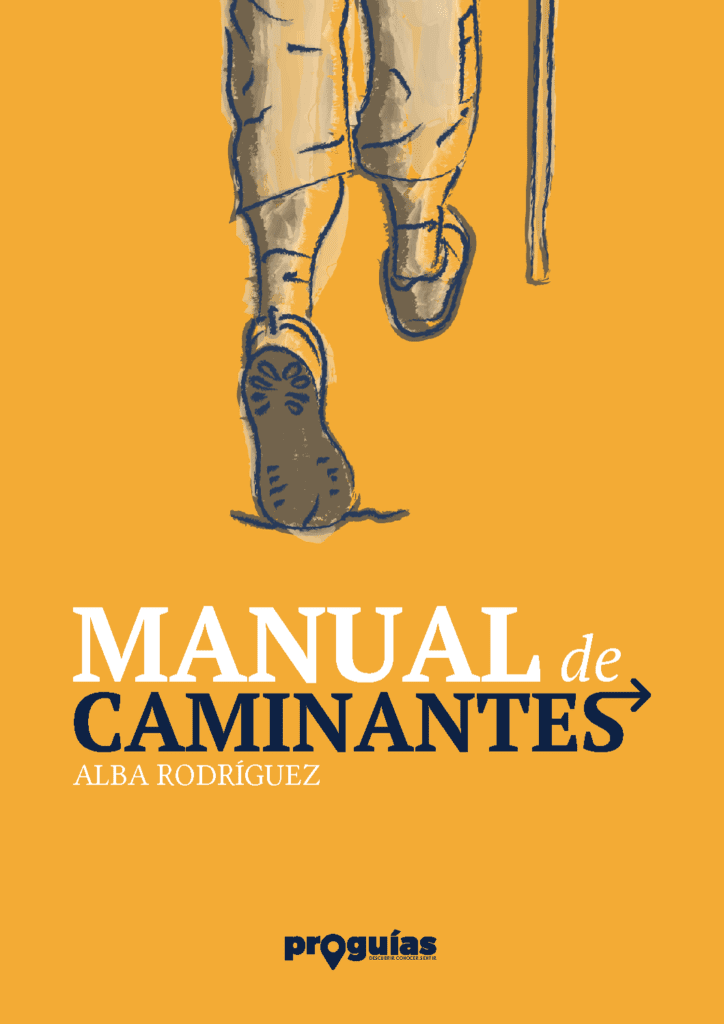The Camino de Santiago is a demanding physical activity. This means that those who walk it are not free from injuries and other physical problems. The good news is that, many times, injuries on the Camino de Santiago can be prevented by taking care when moving forward and not demanding our body more than it can give.
The most common injuries and their causes
Before listing the most common injuries associated with the Camino de Santiago, it should be said that most pilgrims reach their destination without major complications. A large percentage of pilgrims suffer blisters, for example. However, most of the problems listed here are there because they are statistically important in terms of the type of injuries, but infrequent in relation to the number of people who each year do the Camino.
- Blisters, chafing and lacerations. As we said, it is the most common injury on the Camino de Santiago. Everyone has suffered them at some point in their daily lives. They are annoying and, to avoid them, it is important to keep the skin dry and wear appropriate and "tamed" footwear.
- Sprains. The most common is the ankle sprain, and is related to incorrect foot support.
- Plantar fasciitis. Translated: inflammation of the thick tissue covering the sole of the foot from the heel (calcaneal bone) to under the toes (metatarsal area). It can be caused by excessively long working days.
- Tendonitis. Another inflammation, in this case of the tendons. The most frequent are those affecting the Achilles tendon, the quadriceps tendon and the patellar tendon. They are caused by a lack of previous preparation or by the use of unsuitable footwear.
- Meniscus injuries. The menisci are responsible for distributing the loads on the knees and making them more stable. The excess weight we carry in our backpacks and long days can lead to tears in these "shock absorbers".
- Traumatic arthritis. Arthritis is an inflammation of the joints, in this case caused by micro-traumas that can be caused by prolonged descents, long days and excess weight from backpacking.
- Fractures. There are different types of fractures: traumatic fractures, caused by a blow or sudden twisting, and so-called "stress fractures", resulting from overloading. Although not a frequent injury, the most common are those affecting the ankle (malleolar) and those affecting the metatarsals of the toes.
As you can see, most injuries are related to overloading our body and bad choice of footwear. So, now, here are our five tips to avoid injuries on the Camino de Santiago.
1. Advance preparation is essential
The first advice that everyone will offer you when it comes to do the Camino de Santiago with guarantees is that you prepare for it. It is true that the Camino can be done by people of all physical condition. It is because the routes are extremely flexible and the stages can be divided almost at will. But it is also true that it is not a mid-afternoon stroll through the countryside. In the end, however it is organised, it is going to involve walking (or pedalling) many kilometres every day and our body needs to be prepared.
On the preparation of the Camino de Santiago we have already written a more specific post that we recommend you to read calmly: Doing the Way of St. James: 5 reflections to know if you are ready. Here you will find some ideas on how to prepare for your Camino in the weeks leading up to it, so that your body arrives on D-Day in good shape and used to the Camino routine.
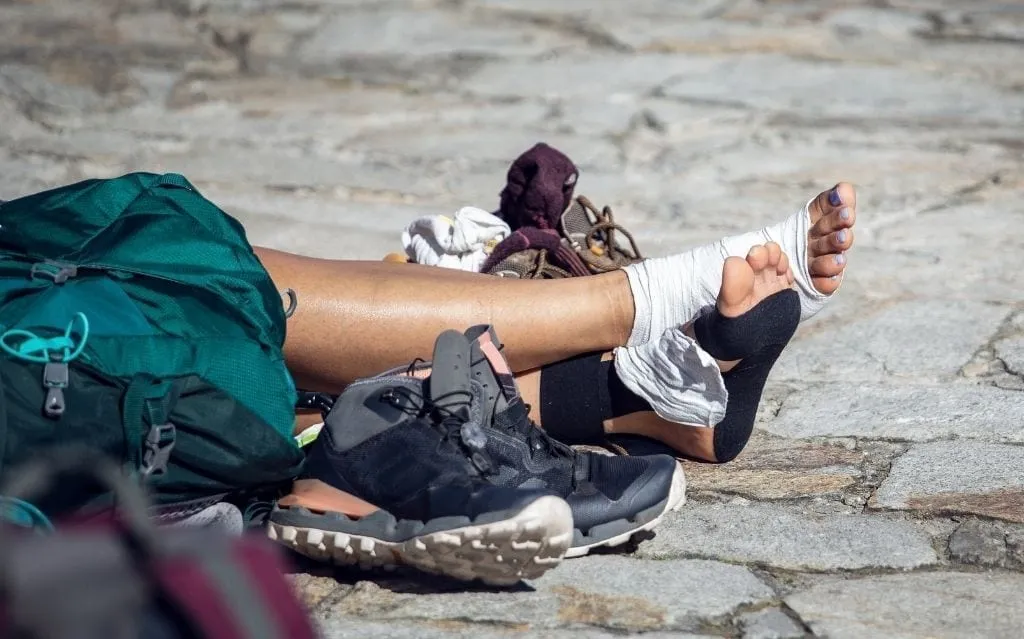
On the other hand, preparation beforehand is not only about physical preparation. It is important to plan our Camino by choosing the most suitable route, as not all routes are the same — and not all are equally demanding. Making sure that the daily distances are affordable for our abilities and providing us with good rest and good nutrition is equally important. And this is much easier if you plan ahead. Especially in holiday periods, when the influx of pilgrims and walkers is much greater and hostels and other accommodation fill up quickly.
Undoubtedly, there are pilgrims who embark on the Camino without knowing where they will spend the night and adapt the days to their physical and mental state at all times. But this only works if you know the Camino very well, where there are hostels and how much effort it takes to get to the next point. That is, if you already have experience. So, if it is the first time you are going to do the Camino, it is better to have the stages clear and, if possible, book the overnight stays. Either in inns and hotels or in hostels. Either on your own or with an agency like Proguías.
Proper planning and prior physical preparation prevent us from overloading our bodies and that, as a consequence, injuries may occur.
2. Attention to luggage
Another way in which it is easy to fall into overloads is by subjecting our body to the additional weight of our luggage. On the Camino de Santiago it is common to find people who are struggling along, almost buried by huge backpacks full of all kinds of objects.
The general recommendation is that the backpack does not exceed 10% of our body mass. Of course, people with good physical preparation can exceed this percentage without risk, but we know that, like society as a whole, many of the people who do the Camino de Santiago have a rather sedentary lifestyle. If this is the case, exceeding this 10% often leads to injuries.
The advice, therefore, is simple: reduce the weight of your luggage. Leave everything that is not essential at home. Also, if you can, make sure your backpack is light and has compression straps to support your lower back and a shoulder belt. This will distribute the weight more evenly and avoid back and shoulder pain associated with this type of extra burden.
Another option to reduce the extra weight is to hire the transport of your luggage from accommodation to accommodation. This way, you can take a light backpack with the essentials (your ID, credentials, energy bars, water, wallet and mobile phone) and keep the rest of your belongings in the next accommodation without having to carry them with you for the whole stage. There are different companies dedicated to providing this service, and it is part of any of our programmes.
3. Protecting the feet
Footwear is another of the fundamental aspects when it comes to preventing injuries on the Camino de Santiago. And it is logical that this is so, especially for those who do it on foot. Proper footwear should support the foot firmly and, at the same time, allow ankle mobility and perspiration.
When it comes to footwear, there is plenty to choose from. From lightweight trainers to mid-calf hiking boots (which cover the ankles and protect them from bumps against rocks). Ideally, you should try several options throughout your preparation, bearing in mind that, in general, the latter are more suitable for winter and more complex terrain, while lighter shoes are more suitable for summer and technically simpler routes.
In other words: the choice of route will largely determine the type of footwear. More complex routes, such as the Camino Primitivo or the Camino del Norte, will generally require more robust footwear and greater foot protection. Poor support can lead to tendinitis, pulled muscles and sprains. And poor perspiration will lead to the dreaded blisters.
In any case, what you will see in many articles about the preparation of the Camino de Santiago is that you should never (never) use your shoes for the first time on the Camino. Really, never. That is, when you start your route, the footwear should already be worked, molded to your way of walking and your foot. To use new footwear on day 1 of your Camino is synonymous with scratches and lacerations which can become a serious problem for further progress.
About perspiration: you must take into account not only the footwear, but also the socks. We recommend using 100% socks made of cotton, without seams, and applying Vaseline or a moisturising cream beforehand to reduce the friction between the sock and your skin. In this way, we will also avoid chafing and blisters.
Another way to protect our feet is to help us to move forward with walking sticks that provide stability, reducing the slip and fall hazards. Especially in steep descents that you can find at some point of the Camino. The traditional pilgrim's poles used to fulfil this function, and today we have all kinds of trekking poles, including telescopic ones, which can be adapted to any height.
Handbook of Pilgrims
Download the most complete guide to prepare the Camino de Santiago from scratch and step by step.
4. Take your time
Another universal advice to avoid injuries on the Camino de Santiago: "your Camino, your pace".
It is true that one of the basic aspects of the Camino de Santiago is to burn kilometres, but that is not the only goal, nor is the Camino a race.
In the part of previous preparation, if it is your first time on the Camino, try that the stages you design do not exceed 25-30 km (if you are going to do it on foot) or 60-80 km (by bike). It is clear that, with preparation, we can increase the distance, but most stages are between these reference values, and it is for a reason.
And the other way around, the same thing. As we mentioned above, the Camino is flexible enough to be able to do shorter stages if you think your body is not ready for the more traditional stages. Or if you simply prefer to take the Camino more slowly. The only variant is that you will need more days. In exchange, you will have more time available to visit the different localities.
Of course, many people who do the Camino de Santiago take advantage of their holidays and have limited time to do it. If this is your case, keep in mind that you can divide your pilgrimage in different periods. The only requirement (if in the end you want to get the Compostela) is that the stamps on the credential are ordered geographically. In other words: you can do a section of the Camino one year and, the following year, continue where you left off.
Lastly: taking your time also means stretching and mobilising your joints before the start of the day. Especially knees, ankles, shoulders and neck, which are the ones that suffer the most throughout the day. In addition, it is essential that you start each day with a gentle, rhythmic pace, so that you give your body time to warm up gradually before increasing the pace.
5. The importance of breaks
As in any demanding physical activity, breaks are important on the Camino de Santiago. The aim is to recover energy and avoid stiffness. For this, it is important to take a break from the weight of the backpack, making new mobilisations of the neck and shoulders.
It is also important to take advantage of these stops to hydrate well and, if possible, recover energy with some kind of food. Energy bars are the order of the day, but fruit is a more than adequate recommendation.
In addition, breaks are the perfect time to take off your boots or trainers and allow your feet to dry. If there is a fountain or stream on site, you can cool them in it. If there isn't, standing them up for a few minutes will often work as well. And, again, repeat the ankle mobilisations - particularly if you have been wearing boots that covered the ankle and made it difficult to roll it.
The general recommendation is to take breaks every one to two hours — depending on your physical condition — and then start walking again at a gentle pace to warm up your body again.


